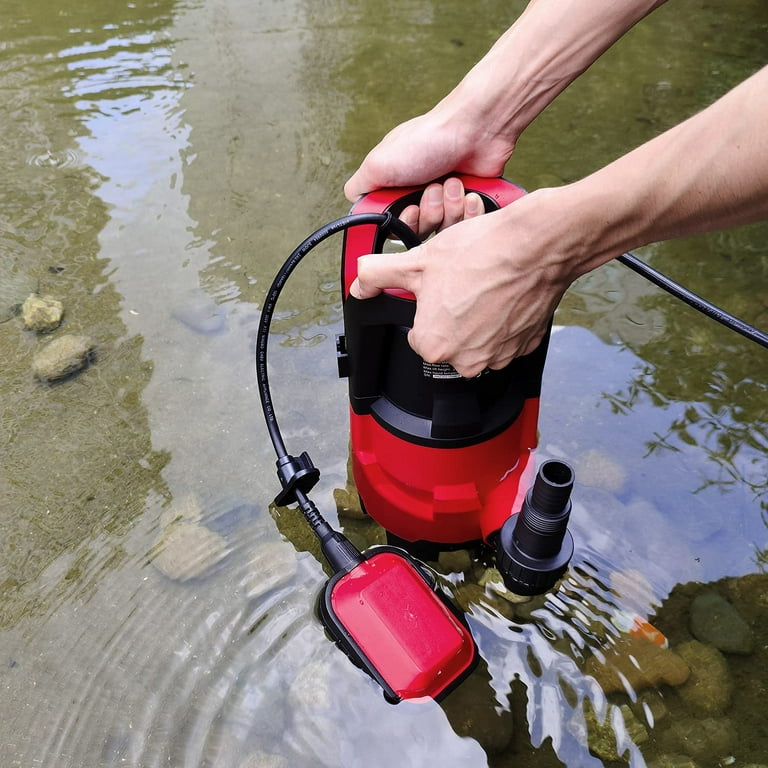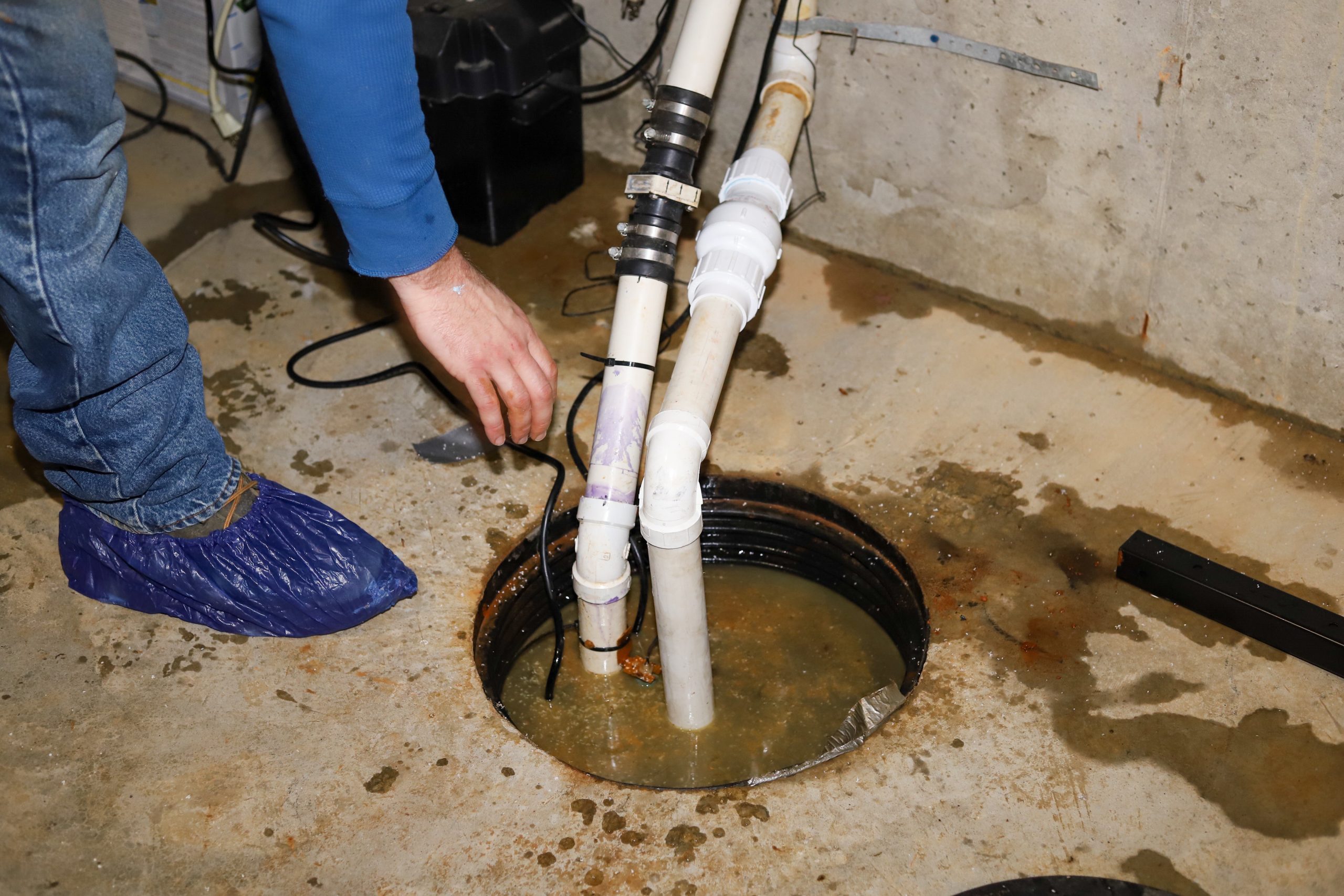Easy-to-Follow Tips for Maintaining Your Sump Pump
Easy-to-Follow Tips for Maintaining Your Sump Pump
Blog Article
What're your thoughts concerning Keep Your Sump Pump Clean, It'll Keep You Dry?

Sump pumps are crucial components in several homes, particularly in locations susceptible to flooding or excessive wetness. They aid prevent water damages by effectively eliminating excess water from cellars or crawl spaces. Nevertheless, like any other device, sump pumps need routine maintenance to ensure they function successfully when required one of the most. Cleansing your sump pump is an important part of its upkeep, and recognizing how to do it effectively can conserve you from costly repair services and potential catastrophes.
Introduction
Keeping a clean sump pump is essential for its appropriate functioning and longevity. Neglecting this essential task can cause blockages, malfunctions, and inevitably, water damages to your building. As a result, discovering just how to cleanse a sump pump is vital for house owners who rely on these gadgets to keep their cellars completely dry and secured.
Signs of a Dirty Sump Pump
Recognizing when your sump pump requires cleaning is essential for protecting against possible breakdowns. Some usual indications that show a filthy sump pump include strange noises during procedure, minimized water flow, and noticeable debris in the pit. If you discover any of these signs and symptoms, it's vital to clean your sump pump promptly to avoid any type of further problems.
Preparing for Cleaning
Prior to you begin cleansing your sump pump, it's important to take some security preventative measures. Begin by turning off the power to the pump to stay clear of any electric mishaps. Additionally, put on appropriate safety equipment, such as gloves and goggles, to secure on your own from dirt, debris, and possible virus.
Understanding the Sump Pump
Before diving right into the cleansing procedure, it's important to have a standard understanding of just how a sump pump functions. Typically set up in a pit or container listed below the cellar flooring, a sump pump contains several essential parts, including a pump, a float button, and a discharge pipeline. When water collects in the pit, the float button turns on the pump, which then pumps the water out through the discharge pipeline, away from the building's structure.
Step-by-step Overview to Cleaning a Sump Pump
Shutting Off the Power
Begin by detaching the power supply to the sump pump to stop any kind of crashes while cleaning.
Checking for Proper Performance
Prior to re-installing the pump, carry out a fast test to ensure that the float switch triggers the pump properly. Pour some water into the sump pit and observe the pump's procedure. If whatever is operating appropriately, you can rebuild the pump and reconnect the power supply.
Removing Debris and Dirt
Make use of a container or a scoop to remove any type of visible debris, dirt, or debris from the sump pit. Dispose of the debris appropriately to prevent it from obstructing the pump or the discharge pipe.
Cleansing the Pump and Drift Switch Over
Once the pit is clear of debris, thoroughly eliminate the pump from the pit. Evaluate the pump and the float button for any type of signs of damage or wear. Utilize a soft brush or fabric to cleanse the surfaces and remove any kind of gathered gunk.
Flushing the System
After cleaning the pump and float button, purge the sump pit with clean water to remove any staying dirt or debris. This will certainly assist make certain that the pump runs smoothly and efficiently.
Upkeep Tips to Maintain Your Sump Pump Clean
Along with routine cleaning, there are several upkeep pointers you can follow to maintain your sump pump in ideal problem:
Conclusion
Cleansing your sump pump is an important aspect of its maintenance and makes certain that it runs effectively when you require it the most. By complying with the steps outlined in this overview and integrating routine upkeep into your regimen, you can prolong the lifespan of your sump pump and shield your home from water damages.
6 STEPS ON HOW TO CLEAN A SUMP PUMP PROPERLY
UNDERSTANDING SUMP PUMPS
Your sump pump plays a crucial role in protecting your home by managing and removing excess water. It primarily functions as a “shield”, guarding your basement against the damaging effects of water accumulation. The pump is housed in a sump pit in the lowest part of your basement, and its job is to pump out any water that collects there.
During heavy rainfalls or when snow melts rapidly, water can infiltrate your basement, posing potential risks like flooding, structural damage, and harmful mold growth. Here, the sump pump springs into action, pumping out the intruding water and directing it away from your home.
SAFETY FIRST
Before cleaning, remember to prioritize safety. Disconnect the sump pump from the power source to prevent any accidental electric shocks. Also, wear sturdy gloves to protect your hands from any sharp or dirty components within the pump.
REMOVE THE SUMP PUMP
After ensuring your safety, the next step is to remove the sump pump from its pit. Doing this might require careful maneuvering as you don’t want to damage any pump components. Once removed, clean the sump pit to remove any accumulated debris or sludge.
INSPECT THE PUMP
Inspect the pump for any visible signs of wear or damage. Check the power cord, float switch, and impeller housing. If any components look worn out or damaged, consider replacing them to ensure optimal performance.
CLEAN THE PUMP
Thoroughly clean the pump with warm, soapy water. Make sure to rid it of any dirt, gravel, or other debris that might impede its performance. You can use a toothbrush to clean the small, hard-to-reach parts of the pump.
REINSTALL THE SUMP PUMP
Reinstall the pump into the sump pit Make sure it’s positioned correctly to remove the water effectively Once it’s back in place, reconnect it to the power source TEST THE PUMP
Finally, pour some water into the pit to ensure the pump works correctly. It should start automatically and begin pumping out the water; if it doesn’t, check the power source and the positioning of the pump.
Remember, while cleaning your sump pump is an essential part of home maintenance, hiring a professional plumber for a thorough inspection and cleaning at least once a year is also important. This will ensure that your pump is in optimal condition, ready to protect your home from potential water damage.
BEST PRACTICES FOR CLEANING SUMP PUMP DISCHARGE PIPES
Regular Inspection: Regularly inspect your discharge pipes, especially during heavy rainfall or snowmelt periods. Look for any signs of blockage or damage. Early detection of problems can prevent serious issues down the line. Periodic Cleaning: Over time, sediment and debris can accumulate in the discharge pipes, impeding the flow of water. Regular cleaning helps keep the pipes clear and functioning efficiently. You can use a high-pressure water jet to effectively clean the pipes. Insulation During Winter: In colder climates, discharge pipes can freeze, blocking the outflow of water. Protect your discharge pipes from freezing temperatures by insulating them with foam pipe insulation. This will ensure the sump pump can continue to discharge water even in freezing conditions. Proper Positioning: The discharge pipe should be positioned to direct water away from your home’s foundation. Improper positioning can lead to water seeping back into the basement. Ensure the pipe is long enough and angled correctly. Installation of a Check Valve: A check valve prevents water from flowing back into your sump pit after the pump has pushed it out. Installing a check valve helps maintain the efficiency of your sump pump and reduces the risk of flooding. Minimize Pipe Turns: Every curve or turn in the discharge pipe can decrease the efficiency of water flow. By minimizing turns and bends in your discharge pipe, you can increase the efficiency of your sump pump. https://www.fullspeedplumbing.com/how-to-clean-a-sump-pump-properly9999/

Do you really like reading up on ? Create a short review down below. We would be pleased to find out your views about this post. Hoping that you come back again in the near future. Please take a moment to share this post if you liked it. Kudos for being here. Revisit us soon.
Book Your Service Report this page